From SDLC to Agentic SDLC: How Agentic AI is Transforming Traditional Software Development

Software engineering has relied on structured processes for very long and helps drive teams to thoughtfully plan and deliver a high-quality product: Guiding teams through key phases of software development: requirements discovery, system design, code implementation, quality assurance, deploying to production, and maintaining the software. Early phases of the SDLC like Waterfall were linear in nature, whereas modern methodologies have turned more toward iterative methodologies (e.g., Agile, Scrum and DevOps) that focus on speed, flexibility, incremental infrastructure changes, and collaboration.
Various Gen AI tools such as Microsoft Copilot, OpenAI ChatGPT, Anthropic’s Claude etc. are now increasingly becoming part of these workflows to introduce efficiency and productivity gains for SW engineering teams. Increases in productivity are undoubtedly visible to all. This all sounds simple, yet, retaining the “big picture” throughout phases is still exceedingly difficult to do and frequently results in inefficiencies such as rework or misunderstandings.
While SDLC offers much-needed structure and accountability, its shortcomings—the maintenance of knowledge silos and handoff friction—are increasingly evident in AI-enhanced, rapid-iteration environments. This initiated conversations about an “Agentic Software Development Lifecycle” (ASDLC), in which autonomous AI agents could potentially change this through more fluid transfer of contextual knowledge. Agentic SDLC is in its nascent stages and may lead to a shift toward more integrated, agent-guided workflows, but it extends existing SDLC environment, rather than entirely supplanting them.
Evolution of SDLC: Beyond the Relay Race
Traditional SDLC is like a relay race, where each stage (requirements, design etc.) hands over a “baton” of documentation to the next. That was great for predictability/mid-size projects, but sometimes caused context to be dropped – design rationale was forgotten, assumptions were missed in the code; trade-offs went un-responded to. Various artifacts at every stage are intended to help counteract this, but the silo still exists. These difficulties are encountered more in legacy modernization projects or enhancement projects than green field projects.
SDLC has evolved over the years: Agile transposed iterative sprints and cross-functional teams to minimize handoffs, while DevOps automated pipelines which dissolve boundaries between development, testing and operations. Dynamic requirements tracking, for example in Jira, and version control systems such as Git, store the history of the code. Still, in these advanced models’ context is lost, particularly when working on large scale projects with distributed teams.
AI’s Mixed Impact on SDLC
Each company is testing out tens and if not hundreds of these specialized AI tools that target one or more parts of the SDLC. While tools like GitHub Copilot, Cursor, ChatGPT, Claude Code, Grok Code etc., can cater the efficiencies in all phases such as code generation for developing phase and test case and test data generation for testing phase but these AI assistants frequently work in silos much like experts with short-term memory.
Copilot could produce code without remembering the architectural tradeoffs made during design, and an AI for testing might misconstrue the original developer’s intent. Dashboards like Copilot Insights supply fragmented metrics (such as the number of lines of code committed, accepted etc.), but do not measure the overall productivity. The problem is that AI, in turn, can inadvertently streamline silos: Phases accelerate, but contextual handoffs stay manual and error-prone, resulting in problems like incomplete implementations or slow bug fixes.
Agentic SDLC: A contextual, agent-driven approach to software development
Agentic AI—machines that see their environments, reason about them in terms of goals, act through tools or APIs, and learn from the consequences—provides a strategy for dealing with these problems. Think back to how Agile transformed software development twenty years ago by emphasizing collaboration over rigid process. Agentic SDLC is doing something similar, except this time the collaborators are not just humans, they are agents that think and act with continuity.
Key elements include:
- Context Propagation: The agents maintain decisions, assumptions, and history of the project flow continuously. They are not reset at every phase.
- Multi-Agent Orchestration: Just like a well-run orchestra, different agents – design, coding, testing – coordinate instead of working in isolation.
- Observability and Governance: Humans stay in the loop, but as conductors, not micromanagers with mechanisms to audit agent actions, ensure compliance, and intervene if necessary
Why It Matters
Agentic SDLC is not about fancy tools but increased possibility of improvement around outcomes:
• Less Rework: Agents save time from not having to relearn information.
• Better Quality: Better quality could be achieved if continuous, context-sensitive refactoring would resolve inconsistencies early with human-in-loop.
• Better Metrics: Not just “lines of code written, committed” but context-aware measures that align with long-term product functionality delivered without re-work etc.
• Flexibility: Agents could support new requirements in a more flexible way, making systems future proof.
Agentic AI is still in its nascent stages, with potential such as trustworthiness, security risks, ethical concerns (e.g., making biased decisions), and integration difficulties with existing technologies and any agentic AI solution must
The Realistic Road Ahead
The SDLC will stay the cornerstone of software development. It will be updated in an AI-driven world. We are about to enter an era when humans will direct strategy rather than continuously filling in gaps. Multiple intelligent agents will coordinate software creation like a symphony, and context will not be lost in handoffs. The most annoying parts of the SDLC are being addressed by ADLC.
The baton is now carried with ease rather than dropped!
(In the next post, we will dive deeper into one of ADLC’s most critical ideas: context propagation – how agents preserve and pass knowledge across every phase of the lifecycle.)
About Author:
Piyush is a seasoned leader and hands-on practitioner specializing in AI, digital, and emerging technologies. He collaborates closely with enterprise customers to address complex business challenges and achieve superior outcomes, including enhanced customer experiences, operational efficiency, innovation, and revenue growth, through the strategic planning, development, and implementation of AI, Gen AI & Digital solutions.






